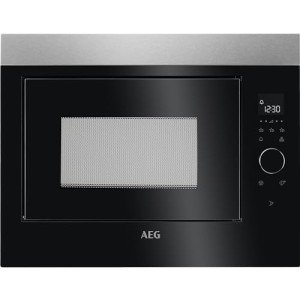A Built in Microwave Oven Combo Offers Convenience and Versatility
A built in microwave oven combo gives you the best of both worlds by making your microwave and oven into one appliance. They can free space on your counters and give your kitchen a sleek design.
These models come with powerful broilers that cook evenly and their microwaves heat food quickly. They also have a wide variety of cooking options to cook various foods.
Size
A built-in microwave and wall oven combination is a great solution for many kitchens. It is a combination of the convenience of a microwave with the flexibility of wall ovens. Explore our complete selection of combination microwaves and wall ovens to find the right suitable one for your home. Be sure to read the cutout specifications and installation instructions for the appliance you choose to ensure that it is suitable in your space. Our microwave & oven combinations include both oven and microwave models with a variety of colors, styles and finishes that will complement any decor. Look for features such as smart and convenient controls and a power cook function and a built-in self-cleaning system to help you save time.
Convenience
A microwave oven with built-in features will free up space on your counters and give your kitchen a sleeker appearance. Because it functions as a microwave and a traditional oven it is able to heat leftovers, frozen meals and pre-packaged meals all in one appliance. It eliminates the necessity for separate countertop appliances or bulky wall ovens. If you're looking to improve your home without the need for major changes the combination microwave oven is a great option.
Microwave oven combos are available in a variety of different styles to match your kitchen's decor. Some have a right-to-left swing-out door, whereas others feature a drop-down design that opens in the same manner as a traditional oven. You can also find microwave ovens with the drawer design that opens like a cabinet. Microwave drawers can be easily reached and are great for small spaces.

Combination microwaves also come with many features that make meal preparation easier and more practical. For example, some models have sensors for steam cycles that automatically adjusts the time and temperature of your food to ensure you receive perfectly steamed veggies and fish. Other features include the broil feature, which lets you quickly melt cheese and cook your favorite food. Crispwave(tm), meanwhile, can grill, bake, and crisp food.
When choosing a microwave combination, be sure to consider how often you'll use each function. If you'll use the oven part of your combo more than the microwave, you might be better off using a double wall oven. It's also important to remember that a combination appliance generally has less capacity than a conventional standalone oven.
Once you've decided on a microwave and oven combo to meet your needs, consider the installation process. Over-the-range models can be positioned over your stove or cooktop and plug into an electrical outlet, while built-in microwaves can be plugged directly into the cabinets or walls of your kitchen. Some models even have trim kits that let you seamlessly integrate your new microwave into your kitchen cabinets.
Energy Efficiency
A built-in microwave oven combo is an ideal space-saving solution for those with smaller kitchens, regardless of whether they reside in a house or an apartment. They can help save the space which would otherwise be taken by separate appliances. They can also help reduce energy consumption. They are more energy efficient than traditional wall-mounted ovens and offer an efficient method to cook. They can also be used to cook food or warm dishes. This eliminates the need for other appliances like toasters or warming plates.
DOE performs several analyses when evaluating potential amendments to energy conservation standards. These include technology and market assessments screening analyses, engineering analyses, and a national impact analysis (NIA). In this SNOPR, DOE will utilize its engineering analysis of microwave ovens to determine what degree of efficiency improvements are feasible for this product type.
In the engineering analysis, DOE will compare the design parameters of a microwave with a set of energy performance objectives. The engineering analysis will then determine the maximum improvement in energy efficiency that is technologically feasible based on the most advanced microprocessor-controlled model available on the market or in working prototypes, or the maximum reduction in energy consumption that is technically achievable with the current technologies available for this product class.
As part of NIA, DOE will assess the impacts on consumers, including the cost savings throughout the lifecycle and simple payback time (PBP). DOE will use the Government Regulatory Impact Model, with an adaptation for microwavable ovens to calculate the industry's net present value (NPV).
DOE will also assess the effects on manufacturers and will use an industry-specific cash flow model specifically tailored to this type of product to estimate manufacturing NPV. Finally, DOE will consider the potential impact on small business manufacturers as well as other subgroups of manufacturers to identify any that could be disproportionally affected by these proposals.
Additionally, DOE will consider whether the testing procedures for microwave ovens need to be updated to include active mode energy usage and a possible integrated active mode energy use measurement. At present, the test procedures only include standby mode power consumption.
Design
Microwaves create heat by causing water molecules vibrate in food. Wall ovens rely upon the circulation of hot air, while microwaves depend on waves to cause food molecules to vibrate. Combination wall ovens blend these two different appliances into a single unit that helps save kitchen space and gives sleek, modern design. It is important to consider your budget and goals before deciding on a combination wall oven. Some of the combination ovens we evaluated have performance or design issues.
